Analyte Specific Reagent. Analytical and performance characteristics are not established.
- Clone
- SK3
- Other Names
- T4, Leu3a
- Isotype
- Mouse IgG1, κ

CD4, also known as T4, is a 55 kD single-chain type I transmembrane glycoprotein expressed on most thymocytes, a subset of T cells, and monocytes/macrophages. CD4, a member of the Ig superfamily, recognizes antigens associated with MHC class II molecules and participates in cell-cell interactions, thymic differentiation, and signal transduction. CD4 has also been shown to interact with IL-16.
Product DetailsProduct Details
- Reactivity
- Human
- Formulation
- Phosphate-buffered solution, pH 7.2, containing 0.09% sodium azide and 0.2% (w/v) BSA (origin USA).
- Preparation
- The antibody was purified by affinity chromatography, and conjugated with APC under optimal conditions.
- Concentration
- 50 µg/mL
- Storage & Handling
- The antibody solution should be stored undiluted between 2°C and 8°C and protected from prolonged exposure to light. Do not freeze.
- Application
-
Suggested for Flow Cytometry
- Disclaimer
-
WARNINGS AND PRECAUTIONS
- Use appropriate personal protective equipment and safety practices per universal precautions when working with this reagent. Refer to the reagent safety data sheet.
- This antibody contains sodium azide. Follow federal, state and local regulations to dispose of this reagent. Sodium azide build-up in metal wastepipes may lead to explosive conditions; if disposing of reagent down wastepipes, flush with water after disposal.
- All specimens, samples and any material coming in contact with them should be considered potentially infectious and should be disposed of with proper precautions and in accordance with federal, state and local regulations.
- Do not use this reagent beyond the expiration date stated on the label.
- Do not use this reagent if it appears cloudy or if there is any change in the appearance of the reagent as these may be indication of possible deterioration.
- Avoid prolonged exposure of the reagent or stained cells to light.
Antigen Details
- Antigen References
-
- Center D, et. al. 1996. Eur. J. Clin. Chem. Clin. Biochem. 34:723.
Customers Also Purchased




Compare Data Across All Formats
This data display is provided for general comparisons between formats.
Your actual data may vary due to variations in samples, target cells, instruments and their settings, staining conditions, and other factors.
If you need assistance with selecting the best format contact our expert technical support team.
-
PerCP anti-human CD4
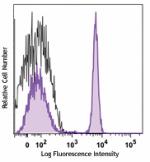
Human peripheral blood lymphocytes were stained with CD4 (cl... -
Purified anti-human CD4
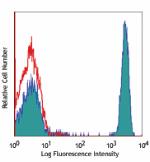
Human peripheral blood lymphocytes stained with SK3, followe... -
FITC anti-human CD4
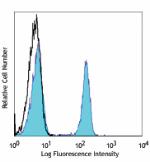
Human peripheral blood lymphocytes stained with SK3 FITC -
PE anti-human CD4
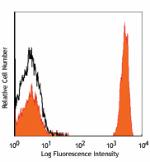
Human peripheral blood lymphocytes stained with SK3 PE -
PerCP/Cyanine5.5 anti-human CD4

Human peripheral blood lymphocytes were stained with anti-hu... -
Biotin anti-human CD4
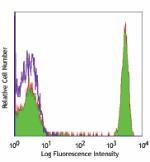
Human peripheral blood lymphocytes stained with biotinylated... -
PE/Cyanine7 anti-human CD4
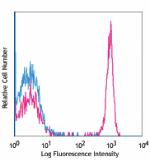
Human peripheral blood lymphocytes stained with SK3 PE/Cyani... -
APC anti-human CD4
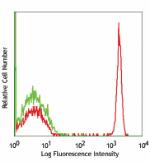
Human peripheral blood lymphocytes stained with SK3 APC -
APC/Cyanine7 anti-human CD4

Human peripheral blood lymphocytes were stained with anti-hu... -
Alexa Fluor® 488 anti-human CD4
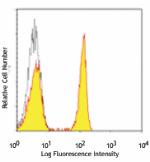
Human peripheral blood lymphocytes stained with SK3 Alexa Fl... -
Pacific Blue™ anti-human CD4
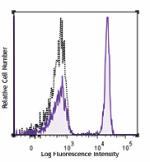
Human peripheral blood lymphocytes stained with SK3 Pacific ... -
Alexa Fluor® 700 anti-human CD4
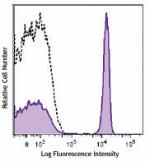
Human peripheral blood lymphocytes were stained with CD4 (cl... -
Purified anti-human CD4 (Maxpar® Ready)
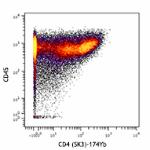
Human PBMCs stained with 154Sm-anti-CD45 (HI30) and 174Yb-an... -
PE anti-human CD4

Typical results from human peripheral blood lymphocytes stai... -
Brilliant Violet 421™ anti-human CD4
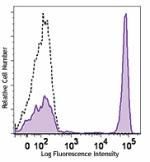
Human peripheral blood lymphocytes were stained with CD4 (cl... -
Brilliant Violet 510™ anti-human CD4
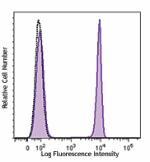
Human peripheral blood lymphocytes were stained with CD4 (cl... -
Alexa Fluor® 647 anti-human CD4
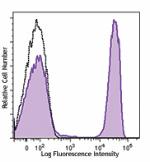
Human peripheral blood lymphocytes were stained with CD4 (cl... -
FITC anti-human CD4

Typical results from human peripheral blood lymphocytes stai... -
APC/Fire™ 750 anti-human CD4
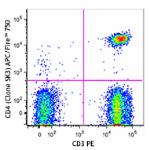
Human peripheral blood lymphocytes were stained with CD3 PE ... 
-
PE/Dazzle™ 594 anti-human CD4
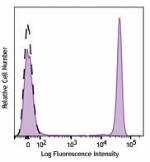
Human peripheral blood lymphocytes were stained with CD4 (cl... -
Pacific Blue™ anti-human CD4
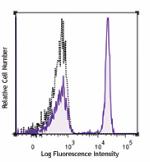
Typical results from human peripheral blood lymphocytes stai... -
Brilliant Violet 785™ anti-human CD4

Human peripheral blood lymphocytes were stained with CD4 (cl... -
Brilliant Violet 750™ anti-human CD4

Human peripheral blood lymphocytes were stained with CD4 (cl... -
Brilliant Violet 605™ anti-human CD4

Human peripheral blood lymphocytes were stained with CD4 (cl... -
Brilliant Violet 711™ anti-human CD4
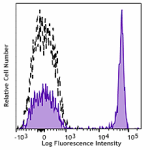
Human peripheral blood lymphocytes were stained with CD4 (cl... -
PE/Cyanine7 anti-human CD4

Typical results from human peripheral blood lymphocytes stai... -
TotalSeq™-A0045 anti-human CD4
-
TotalSeq™-C0045 anti-human CD4
-
PE/Cyanine5 anti-human CD4

Human peripheral blood lymphocytes were stained with anti-hu... -
PerCP/Cyanine5.5 anti-human CD4
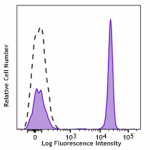
Typical results from human peripheral blood lymphocytes stai... -
Spark Blue™ 550 anti-human CD4
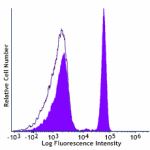
Human peripheral blood lymphocytes were stained with CD4 (SK... -
Spark NIR™ 685 anti-human CD4
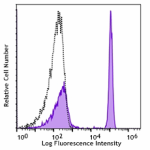
Human peripheral blood lymphocytes were stained with CD3 (cl... -
APC anti-human CD4

Typical results from human peripheral blood lymphocytes stai... -
KIRAVIA Blue 520™ anti-human CD4

Human peripheral blood lymphocytes were stained with CD3 APC... -
APC/Fire™ 810 anti-human CD4
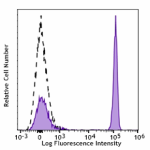
Human peripheral blood lymphocytes were stained with CD4 (cl... -
PE/Fire™ 640 anti-human CD4
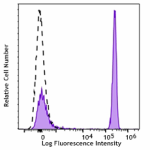
Human peripheral blood lymphocytes were stained with CD4 (cl... -
PE/Fire™ 700 anti-human CD4

Human peripheral blood lymphocytes were stained with anti-hu... -
PerCP anti-human CD4

Typical results from human peripheral blood lymphocytes stai... -
Spark Violet™ 538 anti-human CD4 Antibody
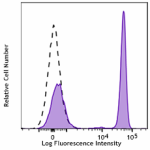
Human peripheral blood lymphocytes were stained with CD4 (cl... -
Spark YG™ 581 anti-human CD4

Human peripheral blood lymphocytes were stained with anti-hu... -
Alexa Fluor® 660 anti-human CD4
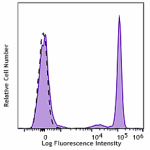
Human peripheral blood lymphocytes were stained with CD4 (cl... -
Spark YG™ 593 anti-human CD4

Human peripheral blood lymphocytes were stained with anti-hu... -
PE/Fire™ 810 anti-human CD4 Antibody

Human peripheral blood lymphocytes were stained with anti-hu... -
APC/Fire™ 750 anti-human CD4
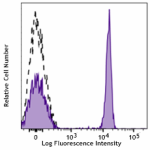
Typical results from human peripheral blood lymphocytes stai... -
Spark Blue™ 574 anti-human CD4
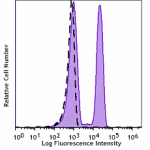
Human peripheral lymphocytes were stained with anti-human CD... -
GMP APC anti-human CD4
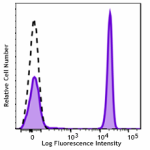
Typical results from human peripheral blood lymphocytes stai... -
TotalSeq™-B0045 anti-human CD4 Antibody
-
Spark Violet™ 423 anti-human CD4 Antibody

Human peripheral blood lymphocytes were stained with anti-hu... -
GMP Pacific Blue™ anti-human CD4
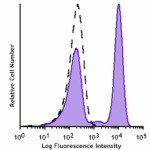
Typical results from human peripheral blood lymphocytes stai... -
Spark UV™ 387 anti-human CD4

Human peripheral blood lymphocytes were stained with anti-hu... -
GMP PE anti-human CD4

Typical results from human peripheral blood lymphocytes stai... -
GMP FITC anti-human CD4

Typical results from human peripheral blood lymphocytes stai... -
Spark Red™ 718 anti-human CD4

Human peripheral blood lymphocytes were stained with anti-hu... -
GMP PerCP anti-human CD4
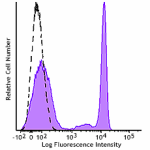
Typical results from human peripheral blood lymphocytes stai... -
GMP PE/Cyanine7 anti-human CD4
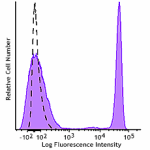
Typical results from human peripheral blood lymphocytes stai... -
Spark Violet™ 500 anti-human CD4

Human peripheral blood lymphocytes were stained with anti-hu... -
GMP PerCP/Cyanine5.5 anti-human CD4
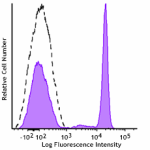
Typical results from human peripheral blood lymphocytes stai... -
Brilliant Violet 650™ anti-human CD4

Human peripheral blood lymphocytes were stained with anti-hu... -
PerCP/Fire™ 806 anti-human CD4

Human peripheral blood lymphocytes were stained with anti-hu... -
Spark Blue™ 515 anti-human CD4

Human peripheral blood lymphocytes were stained with anti-hu... -
GMP APC/Fire™ 750 anti-human CD4
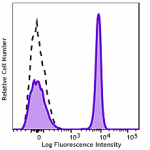
Typical results from human peripheral blood lymphocytes stai... -
Spark Violet™ 423 anti-human CD4
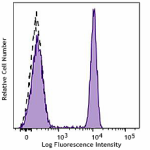
Typical results from human peripheral blood lymphocytes stai... -
PerCP/Fire™ 780 anti-human CD4

Human peripheral blood lymphocytes were stained with anti-hu... -
PE/Fire™ 744 anti-human CD4

Human peripheral blood mononuclear cells were stained with a... -
Spark PLUS UV395™ anti-human CD4

Human peripheral blood lymphocytes were stained anti-human C... -
PE/Dazzle™ 594 anti-human CD4

Typical results from human peripheral blood lymphocytes stai... -
Spark PLUS B550™ anti-human CD4

Human peripheral blood lymphocytes were stained with anti-hu... -
Brilliant Violet 570™ anti-human CD4

Human peripheral blood lymphocytes were stained anti-human C...













Follow Us